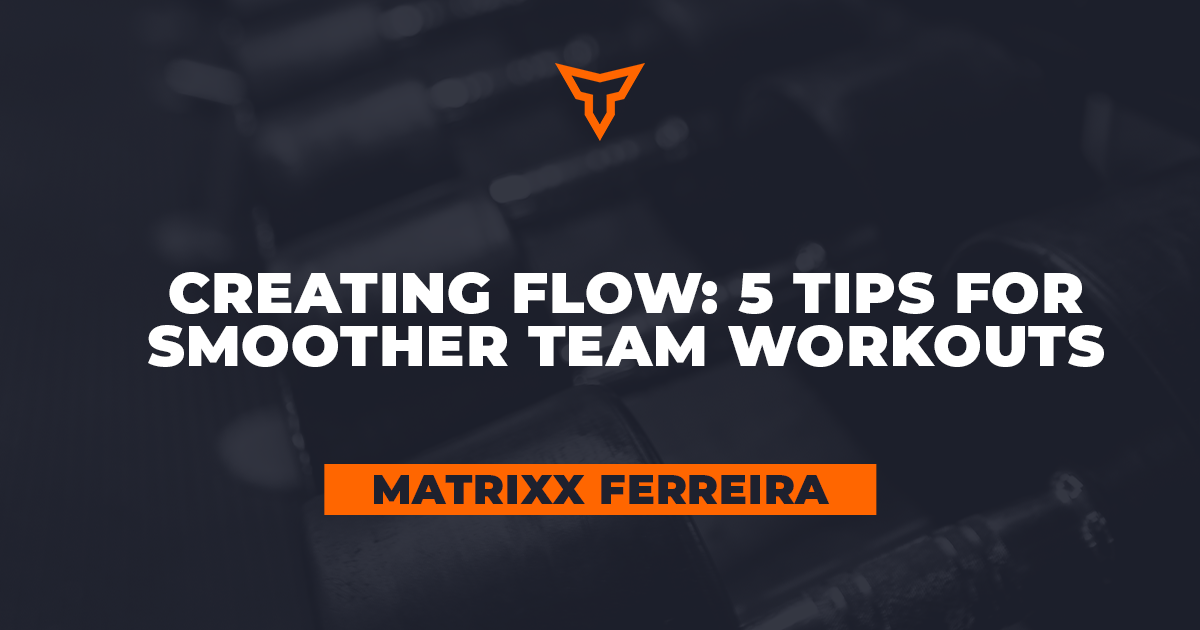From the GA's Desk: Essentials to Speed Training
Author Jared Shibley is a Graduate Assistant Sport Performance Coach at Springfield College.
The role of a strength and conditioning professional in sports performance is often generalized to making athletes “Bigger, Faster, and Stronger” (depending on the biomechanical analysis of the given sport, of course). Nonetheless, most strength and conditioning coaches are much more familiar with weight room programming for strength and size than they are with field programming for speed. Therefore, we must ask ourselves the question: Are we really making athletes “Bigger, Faster, and Stronger”, or just “Bigger and Stronger”? To continue to bridge the gap between weight room and sport, effective speed development will have to take priority.
DEFINING YOUR SPEED “SYSTEM”
First and foremost, coming up with an appropriate “system” or periodization scheme for speed training is vital to designing a successful program. Technical drills focusing on proper movement patterns when accelerating, decelerating, sprinting, or changing direction should always be taught initially. From here, both intensity and sport specificity of training can increase to Pre-Programmed drills that mimic movement patterns seen in sport. These should be pre-determined so the athlete can continue to prioritize proper technique over performance. Finally, the program should progress to Random drills performed at the highest intensity and requiring reaction to given stimuli, so training can transfer to competition. Performance success in Random drills is based upon proper technique, movement strategies, and a quick reaction time.
Linear-Speed “System” Progression Example:
LESS = MORE?
When it comes to speed training, one of the most common mistakes by strength and conditioning professionals and/or sport coaches is doing too much. When sport coaches are concerned about the physical fitness of their athletes, they will typically revert to more conditioning or “speed” training. Unfortunately, this only induces fatigue, decreases the quality of performance, and increases the risk of overuse injury. By doing more work you are only hurting the athlete, making speed development a scenario where less can be more.
Believe it or not, the correct solution to getting your athletes in better shape is to make them faster. You see, increasing one’s maximum velocity abilities will, in turn, increase their speed reserve. For that reason, the athlete will now be able to perform at a given intensity for a longer period of time with less effort, which basically defines what it means to ‘get in better shape’.
Having a profound understanding of appropriate Work:Rest ratios and knowing how to properly balance High- and Low-Intensity training days are crucial to successful speed programming. Although reaching points of exhaustion via incomplete recovery during training can be beneficial for improving aerobic capacity, quality of the session will diminish, and sprint performance will likely not improve. If your goal is to get the athlete faster, establishing full recovery between repetitions is vital. Additionally, including both active and passive recovery days each week is helpful to maintain a proper balance between training volume, intensity, and frequency.
SPORT-TECHNOLOGY
The use of sport-technology is a great way to monitor workload, analyze performance, as well as increase program “buy-in” from the athletes. Examples of popular sport-tech equipment include Catapult GPS, force plates, timing gates and Tendo units.
The use of Catapult GPS in competitive athletics has grown substantially due to its ability to help coaches prepare athletes for the demands of competition through workload management and monitoring individual development. More importantly, Catapult reduces injury risk by displaying workload data that shows coaches when to push limits and when to “back off” during training. Additionally, Catapult is reliable throughout the Return to Play rehabilitation process for injured athletes by helping coaches/trainers set appropriate benchmarks and goals for progressive and safe return to sport.
Force plates help quantify balance and gait, and are used to monitor program effectiveness, return to play protocols, and individual athlete screening. Common sport performance metrics analyzed by force plates include (1) rate of force development, (2) lower limb stiffness, (3) vertical ground reaction forces, (4) ground contact times, (5) force generation, absorption, and transmission capabilities, and (6) inter-/intra-muscular coordination. Therefore, force plates can accurately account for any functional abnormalities an athlete may exhibit; allowing the coach to manipulate their respective program to increase performance and decrease risk of injury associated with movement dysfunction.
Timing gates measure how fast an athlete can go from point “A” to point “B” and serve as a valid evaluation of program effectiveness and individual performance progress. A “timing gate” is a pair of tripods with infrared beams that calculate the exact moment an athlete crosses a particular point. Although timing gates provide objective feedback for coaches, they are often limited for assessment of linear speed via acceleration and maximum velocity metrics.
Lastly, Tendo units are a form of velocity-based training that immediately provide data such as movement velocities and power outputs exerted during an exercise. Instant feedback from each rep helps coaches/trainers ensure their athletes are training specifically for development in a desired area. Furthermore, athletes can challenge themselves to beat personal records and outperform others, fostering intra- and interpersonal competition.
Using sport-tech to measure performance variables develops a competitive environment, increases the likelihood of athletes giving their best effort during the session, and helps the athletes gain further insight into their training demands- showing them why they train a particular way and how this will translate onto the court/field. When athletes consistently see their performance results, they become extrinsically motivated to achieve personal records.
SPECIFIC AND NON-SPECIFIC SPEED TRAINING METHODS
Specific speed training methods (aside from technique) simply require an athlete to sprint, or run at a near maximum-effort pace. To progress and vary training methods, different forms of sprinting are included, such as resisted sprinting, assisted (overspeed) sprinting, incline and decline sprinting. On the other hand, non-specific speed training can take many forms, such as lower-body strength training (knee and hip dominant exercises), lower-body power training, and plyometrics (both utilizing triple extension).
“Specific” Speed Training Example - Resisted Sprinting Methods
“Non-Specific” Speed Training Exercise Progression Example - “Jump” Plyometrics (Dr. Adam Feit – Assistant Professor of Exercise Science, Springfield College)
(Dr. Adam Feit – Assistant Professor of Exercise Science, Springfield College)
So how exactly do we ‘bridge the gap’ between speed training and sport performance? First, you need to develop a system for your program design. Begin with drills that focus on proper technique and movement patterns, before progressing to pre-planned drills that increase in intensity and mimic movements seen on the court/field. Next, add a stimulus to drills that force that athlete to both anticipate and react- most translating to competition. Secondly, understand that running your athletes into the ground will likely make them slower, not faster. Always consider appropriate intensity, volume, and work-to-rest ratios to ensure high (or in this case, fast) performance rather than building aerobic capacity. Utilizing sport technology is a valid and reliable method to keep athletes engaged, performance-driven, competing, and, most importantly, knowledgeable about their training. Furthermore, non-specific speed training methods (resistance training, Olympic lifts, plyometrics) correlate to sprinting performance without actually having to run, which can be useful when it comes to load-management.
Subscribe to our blog
Subscribe to receive the latest blog posts to your inbox every week.
Related posts

Will Artificial Intelligence Take Over Strength Coach Jobs?
Private Facility Summer Training That Delivers: Building More Explosive Athletes


